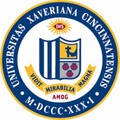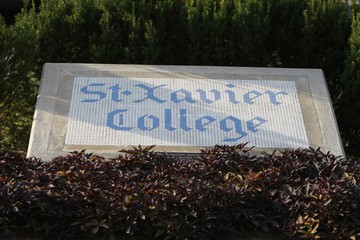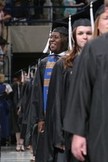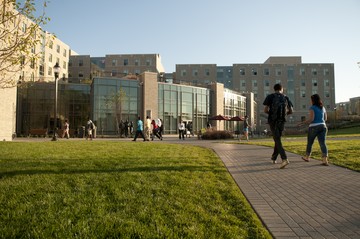Intro to Xavier History
Xavier University: An Historical Perspective
By Debra Mooney, Ph.D. and George Traub, SJ
Ignatius Loyola, founder and first Superior General of the Society of Jesus, attended the University of Paris, earning bachelor's and master's degrees. While at the University, he developed a close relationship with six men who became "friends in the Lord" with a desire to draw others to God. One by one, they also shared the experience of making Ignatius' Spiritual Exercises. These men, of various European nationalities, took vows together and later formed the Society of Jesus.
Xavier University's patron, St. Francis Xavier, was one of these founding Jesuits. He was a roommate and best friend of Ignatius. He, like Ignatius, was a nobleman from the Basque country of Northern Spain. Xavier is known as the first and greatest Jesuit missionary. He worked in India, Malaysia, Indonesia and Japan. A companion described him in this way:
I have never met anyone more filled with faith and hope, more open-minded than Francis. He never seems to lose his great joy and enthusiasm. He talks to both the good and the bad. Anything he is asked to do, Francis does willingly, simply because he loves everyone.

The seal of Xavier University reflects the Jesuit order and the life of Xavier. The five vertical stripes suggest the coat of arms of the Xavier family. A right arm wearing the Jesuit cassock holds aloft the cross, signifying Xavier's preaching and missionary works. The three seashells denote his three journeys to the Far East. Above the shield is the Jesuit seal - "IHS" - the first three letters of the name Jesus in Greek. Below is the Jesuit motto, A.M.D.G. (Ad Majorem Dei Gloriam or "for the Greater Glory of God") and Vidit Mirabilia Magna, a phrase from the psalms applied to Xavier which translates "he has seen great wonders."
 Xavier University was the first Catholic institution of higher learning in the Northwest Territory. It is the fourth oldest Jesuit university and sixth oldest Catholic university in the United States. The school was founded in 1831 as a men's college, the Athenaeum, in downtown Cincinnati, adjacent to St. Xavier Church. Bishop Edward Fenwick dedicated the school to the patronage of Francis Xavier. Then in 1840, Fenwick's successor, John Baptist Purcell, asked the Society of Jesus to take control of the school, and the Jesuits changed the name to St. Xavier College.
Xavier University was the first Catholic institution of higher learning in the Northwest Territory. It is the fourth oldest Jesuit university and sixth oldest Catholic university in the United States. The school was founded in 1831 as a men's college, the Athenaeum, in downtown Cincinnati, adjacent to St. Xavier Church. Bishop Edward Fenwick dedicated the school to the patronage of Francis Xavier. Then in 1840, Fenwick's successor, John Baptist Purcell, asked the Society of Jesus to take control of the school, and the Jesuits changed the name to St. Xavier College.
The College moved in 1912 to its current location after the purchase of 26 acres from the Avondale Athletic Club . St. Xavier College and St Xavier High School officially split in 1919, though they were not financially independent until 1934. The name of the school was changed a second time to its current name, Xavier University, in 1930.
. St. Xavier College and St Xavier High School officially split in 1919, though they were not financially independent until 1934. The name of the school was changed a second time to its current name, Xavier University, in 1930.
Xavier admitted women to the day school in 1969, but women had begun attending the college back in 1914 in the evening, weekend, and summer school divisions. In 1984, the University organized itself into three colleges, Arts and Sciences, Business and Professional Studies. Four years later, the Board of Trustees approved the recommendation to replace the latter with the College of Social Sciences (now Social Sciences, Health and Education). This structure continues today under the guidance of a Provost and Chief Academic Officer.
 A number of major building projects, both completed and planned, have transformed the campus including the Cintas Center, Gallagher Student Center, Smith Hall, Conaton Learning Commons, and Justice Hall, which is home to both the Hoff Dining Hall, decorated in the themes of the Gifts of Our Ignatian Heritage, and the Center for Mission and Identity. Soon, there will be a new classroom building and mixed-use development adjacent to campus.
A number of major building projects, both completed and planned, have transformed the campus including the Cintas Center, Gallagher Student Center, Smith Hall, Conaton Learning Commons, and Justice Hall, which is home to both the Hoff Dining Hall, decorated in the themes of the Gifts of Our Ignatian Heritage, and the Center for Mission and Identity. Soon, there will be a new classroom building and mixed-use development adjacent to campus.
Since becoming president on January 1, 2001 and working to achieve his vision of the "University as Citizen," Fr. Michael J. Graham, has provided the leadership to fulfill the University's mission of being "dedicated to engaging and forming students intellectually, morally, and spiritually, with rigor and compassion, toward lives of solidarity, service, and success."